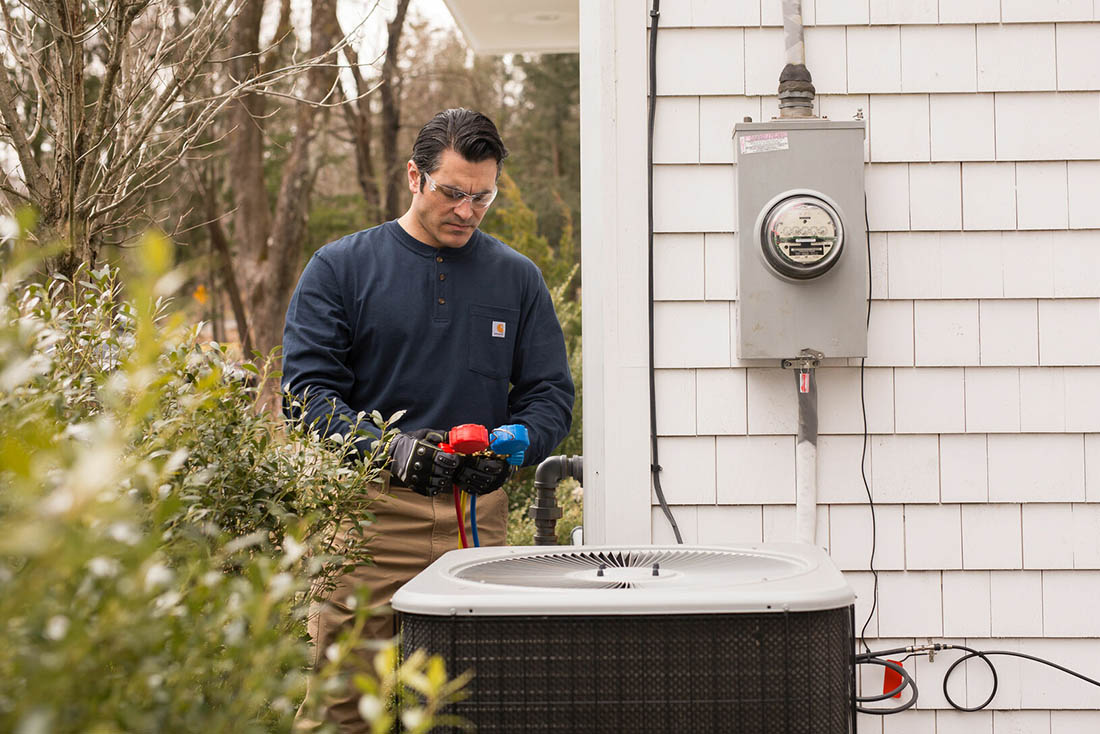Professional Solutions for Your Air Conditioning Needs
Your air conditioner is a core part of your home’s comfort system, and in situations where it’s not running properly, it can result in many different problems. Whether you need a simple fix or emergency repairs, it’s important to work with expert technicians who have the knowledge and tools to get the job done right.
At Sure Temp Air Conditioning, we offer a full range of professional air conditioning repairs. Our team of experts can identify and fix whatever cooling issues your system may be experiencing, from slight problems like dirty filters to major complications like compressor failure. We utilize only the best equipment and techniques to make sure that your air conditioner is running at optimal performance.
The Value of Professional Air Conditioning Repair
Expert air conditioning repair technicians are taught to understand how air conditioners function and can diagnose issues more easily. This means that they can pinpoint problems accurately and work toward solutions in a timely manner so you don’t have to endure long periods without cooling services.
When you hire a professional air conditioning repair company, they will come to your house or office with the right tools and expertise needed to get your air conditioning system up and running again as fast as possible. They understand the various components of air conditioners, such as refrigerant, air handlers and condensers. This ensures that the job gets done correctly and with little to no disruption to your day-to-day routine.
Contact Us Now Or Call 480-307-7784
Five Signs that Your Air Conditioner Needs Repair
Unfortunately, you may not always be able to quickly recognize when there’s something going on with your air conditioner. Some problems are hard to notice, which is why consistent air conditioning maintenance service can be so helpful. It gives a technician the chance to thoroughly examine your air conditioner for warning signs of trouble. That being said, there are a few clear signs that your air conditioner may be in need of repairs, including:
1
Reduced cooling power
If your air conditioner is not providing enough cool air, it could be a sign of a problem with the compressor, refrigerant levels or other components. You may be able to notice a loss in efficiency if your air conditioner needs more time or energy to maintain your preferred temperature.
Strange noises
Any loud or unusual noises produced by your air conditioner, such as rattling or screeching, will often indicate a problem with the fan motor or other moving parts. If these shake loose, they can damage other parts of your air conditioner.
2
3
Increased energy bills
If your energy bills are unexpectedly higher than usual, it’s often a sign that your air conditioner is working harder than it should to cool your home. Keep an eye on your energy bill for any unexplainable surges in the total cost. In some cases, a change in your energy bill is a sign that it’s time to plan for replacement air conditioner installation.
Musty smells
A musty smell emerging from your air conditioner can suggest the presence of mold or mildew. These microorganisms can thrive on or near damp components including the evaporator coils or condensate drainage system.
4
5
Frozen coils
If the coils on your air conditioner keep freezing up, it’s probably because there’s an issue with the refrigerant levels or something is hindering airflow. Without consistent circulation, the temperature inside of the AC unit drops and allows ice to accumulate.

Trust Sure Temp Air Conditioning for All Your Air Conditioning Needs
At Sure Temp Air Conditioning, we’re dedicated to supplying the highest-quality air conditioning services to our customers. Our team of experienced technicians is happy to handle all your repair and maintenance needs, and we’re committed to fast, friendly and affordable resolutions to whatever you’re dealing with. If we recommend air conditioning replacement instead of repair, you can trust that we believe it’s in your best financial interest.
Save Even More with Special Offers
A complete sense of comfort shouldn’t be out of anyone’s budget. Sure Temp Air Conditioning lightens the load with seasonal promotions, discounts and other special offers. These offers help lower costs for key services, new equipment or whatever else you need for your comfort and peace of mind. Check out our current offers for more details on how to save.
Committed to Comfort from the Very Start
While a long history of service is impressive, nothing is more important to customer satisfaction than a dedication to total comfort. Sure Temp Air Conditioning considers your peace of mind our top priority, and that hasn’t changed since we first opened our doors. Learn more about our history, and how our communities support us just as much as we support you.